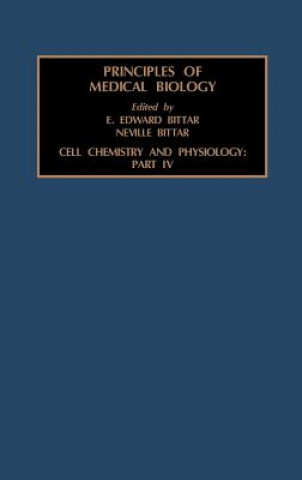
Livraison
Guide d'achat
16 124 818 livres à l’intérieur 175 langues






Afficher toutes les langues (175)
2 047 051 livres numériques à l’intérieur 101 langues






Afficher toutes les langues (101)





Cela ne vous convient pas ? Aucun souci à se faire ! Vous pouvez renvoyer le produit dans les 30 jours
 Bon d’achat
n'importe quelle valeur
Bon d’achat
n'importe quelle valeur
Impossible de faire fausse route avec un bon d’achat. Le destinataire du cadeau peut choisir ce qu'il veut parmi notre sélection.
Cell Chemistry and Physiology: Part IV
 Anglais
Anglais
 378 b
378 b
 common.delivery_to
common.delivery_to
Politique de retour sous 30 jours
Ceci pourrait également vous intéresser


This volume is intended to complete the Cell Chemistry and physiology module. It is about how the traditional boundaries of cell chemistry and physiology are being erased by molecular biology. We do not think it necessary to elaborate on this theme, particularly since the body of core knowledge found in this volume brings us a stage closer to answering the question, 'what makes cell biology into a new discipline?' The first part of the volume deals with the chemistry of actin and myosin and is followed by chapters on cell motility, ATP synthesis in muscle, and contraction in smooth and skeletal muscle. Here the reader is immediately made aware of the contributions molecular biology is making to our understanding of the molecular mechanisms underlying muscle contraction. It is perhaps enough to point out that Huxley's concept of the cross-bridge cycle and generation of force can now be explained in molecular terms. Topics such as muscle fatigue and muscle disorders, as well as malignant hyperthermia are bound to arouse active learning in the student and set the stage for problem-based learning. Most medical students look askance at thermobiology. We think this is a mistake; hence, we have included a section dealing with this subject. This brings us to the chapter on the heat shock response, which at the very outset makes clear that many stressors besides heat are known to result in heat shock gene expression. Many of the heat shock proteins occur in unstressed cells and some of them behave as chaperones. These proteins also reach high levels in a wide range of diseases including neurodegenerative disorders. Whether certain diseases are the result of mutations in the heat shock genes is not yet known. As will be appreciated, much of the work done in this field involved the use of cultured cells. Animal cells in culture are the subject of the last chapter.
À propos du livre
 Anglais
Anglais
Catégories


 Contact
Contact Comment faire ses achats
Comment faire ses achats


















